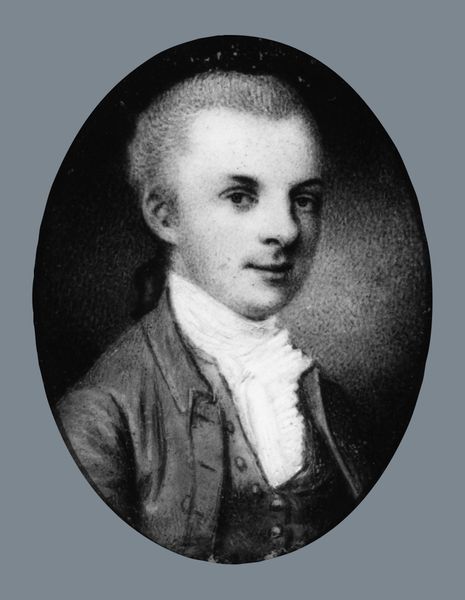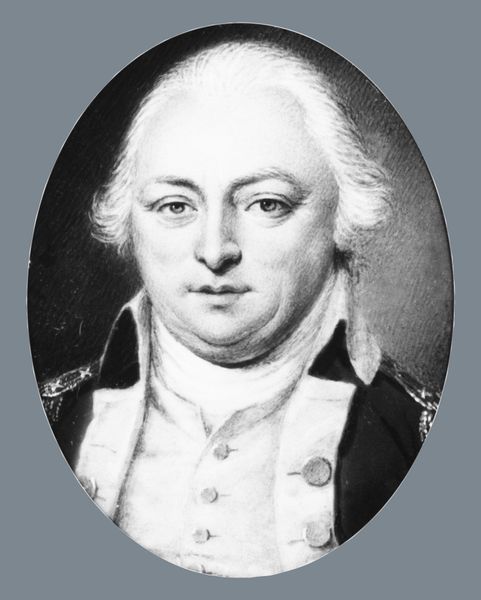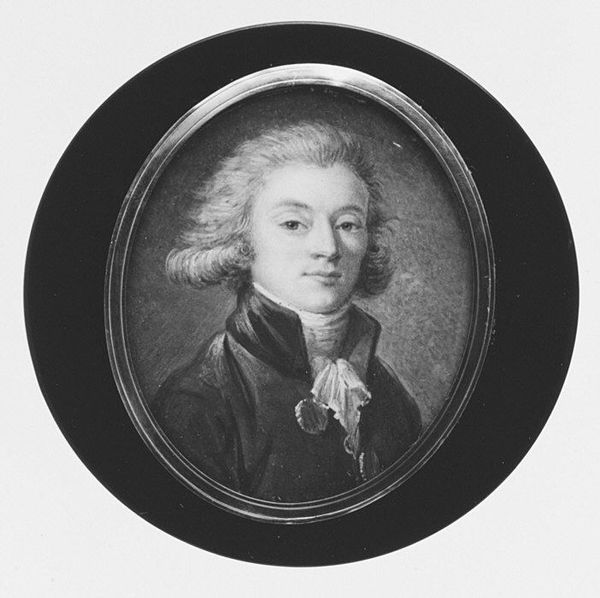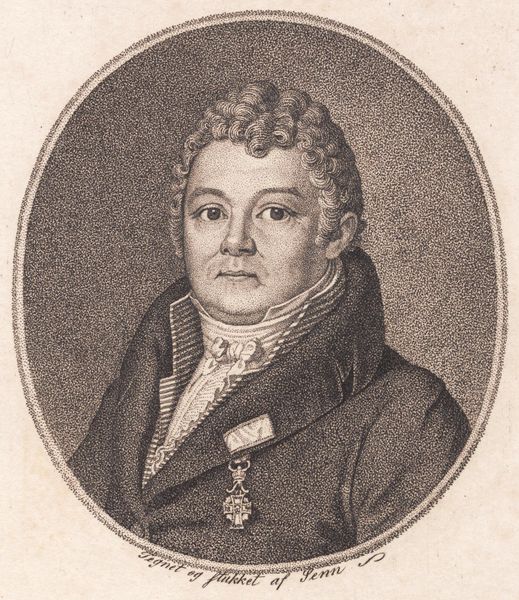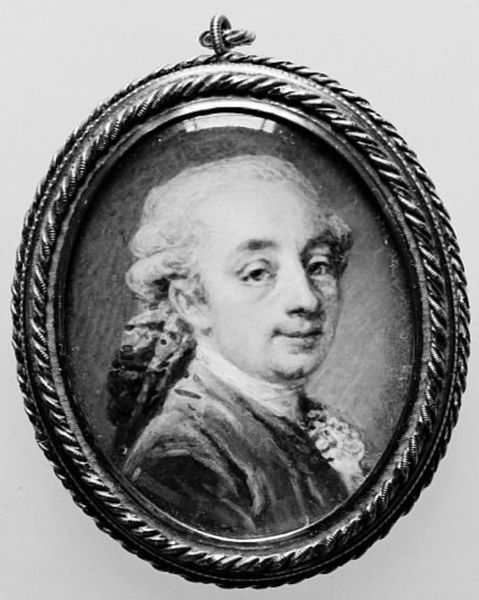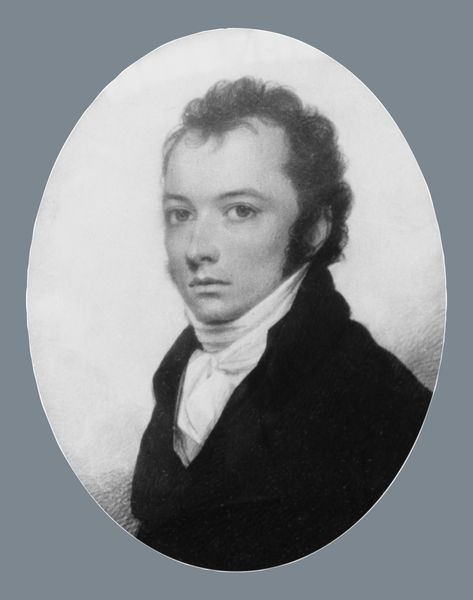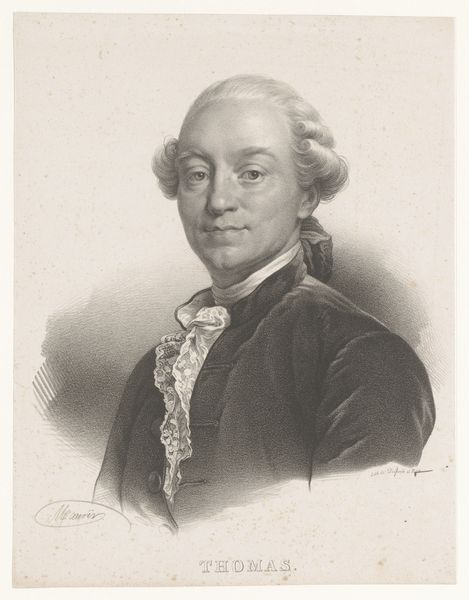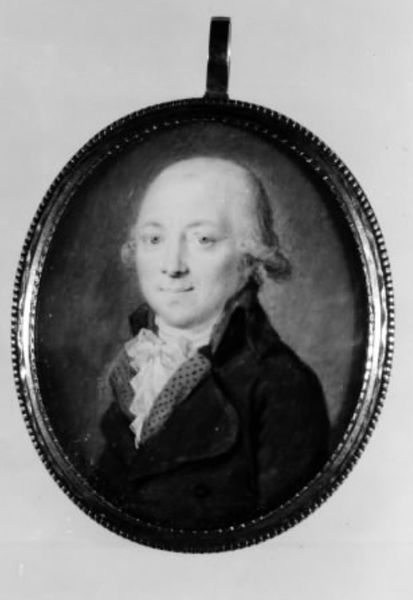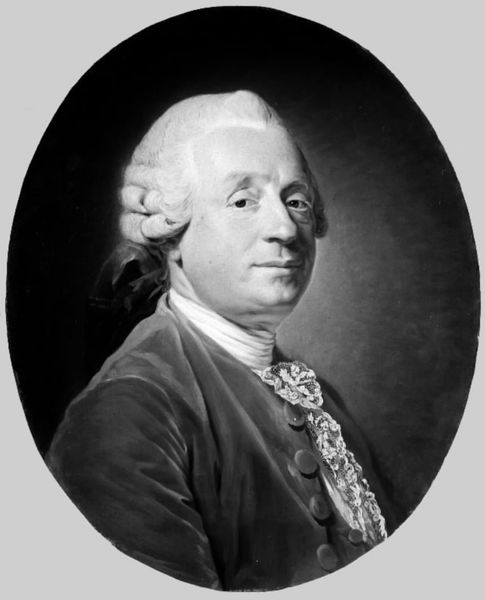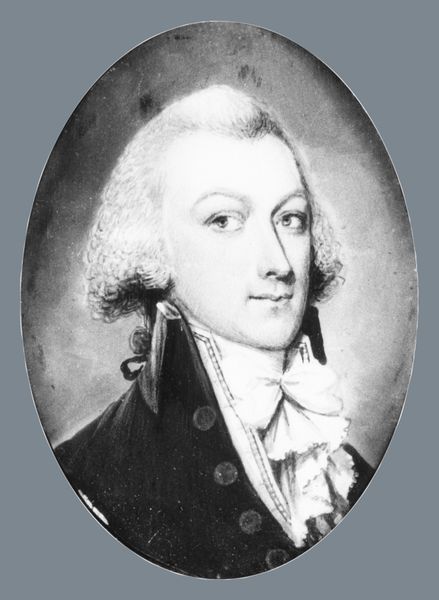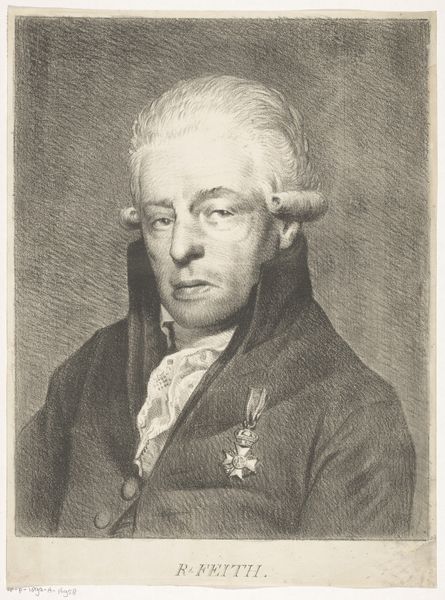
drawing, pencil
#
portrait
#
drawing
#
neoclacissism
#
portrait
#
pencil
#
academic-art
Dimensions: Sight: 1 3/4 x 1 3/8 in. (4.5 x 3.5 cm)
Copyright: Public Domain
Curator: Look at the way John Ramage rendered this portrait of Gilbert Van Cortlandt between 1782 and 1785, primarily using pencil. Editor: There's a cool, detached elegance to it. The limited grayscale palette focuses your attention on the textures – the smooth skin, the intricate ruffles of the jabot. Curator: Indeed. It’s interesting to consider the Neoclassical movement at this time. How artists looked to classical antiquity, and the effect of this aesthetic choice on the portrayal of the subject, reflecting enlightenment ideals of order and reason through material control. Editor: Exactly. See how Ramage's skill in draftsmanship creates form through delicate tonal shifts? The precision gives a sense of measured control – almost stoic. It avoids dramatic embellishment. Curator: Think of the social standing Van Cortlandt held at the time. Portraiture, and particularly drawn portraiture, served to circulate images within elite social circles. This wasn't just art; it was a mode of constructing and reinforcing social identity. Editor: Absolutely. The detail in the depiction of the sitter’s clothes is beautiful! It is evident through the meticulous use of line and shadow the attention that was given to fabrics and lace. The oval format is almost jewel-like and adds a sense of intimacy despite the formality. Curator: It’s the hand of the artisan meticulously recreating lace or curls to mirror social aspiration of the client, with whom there's very likely an exchange around not just aesthetics, but also self-conception. What we see here is just a crystallization of that socio-material process. Editor: It highlights the inherent relationship between artist, sitter, and observer—all intertwined through visual cues. Even today we engage in similar patterns with image making on social media, each constructing curated portrayals of identity for others to perceive. Curator: It is curious how a work conceived within very distinct material and social conditions continues to resonate today when the portrait still generates meaning beyond those original contexts. Editor: A lasting testament, it seems, to both visual eloquence and the ever-evolving interplay between a piece, its process, and us, the audience.
Comments
No comments
Be the first to comment and join the conversation on the ultimate creative platform.
